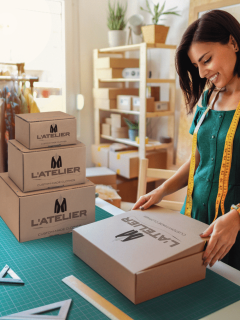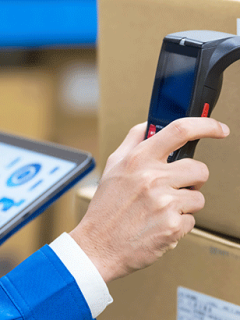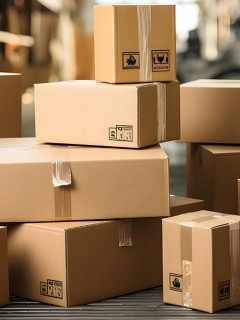Welding, shrinking and vacuuming are three very effective ways of packaging things quickly, bundling them or making them durable, and all this in just a few steps and with consistent quality. Welding and shrinking don’t exactly sound like terms from the world of packaging. People probably think of welding as spraying sparks and shrinking as objects getting smaller. And these ideas are not so wrong when it comes to packaging either: because heat is needed in the welding process and the film is pulled together during shrinking. Sealing and shrinking are very good ways to refine and enhance products with film and at the same time protect them from external influences.
How a welding machine works
A welding machine is always used when bags are to be packed. Different materials are suitable for welding: Films made of polyethylene or polypropylene, but also laminate and aluminium composite.Heat is supplied to the film sealing device by means of electricity, the current is conducted through the sealing wire. Depending on the resistance of the material, the components in the sealing arm heat up. The resulting heat “melts” the film together and the bag or film is closed or joined at this point. We have already explained how this works in more detail in our blog about welding machines.
Which welding machine is the right one?
When choosing the right machine, the first question is whether bags are to be sealed or whether a bag is to be made from tubular film. Ready-made bags save time, because only one side has to be welded. However, if bags of different sizes are required, tubular film is more suitable and a sealer with a cutting device is the right choice.
The thickness of the bag material or the tubular film should also be taken into account when choosing the machine. The higher the thickness, the more powerful the device should be. Welding devices are usually very space-saving and compact and, depending on the design, are therefore also suitable for use in various applications in the warehouse.
Vacuum packaging
Anyone who buys fresh fish at the fish counter has already had it in their hands: vacuum packaging. Food keeps 3 – 5 times longer in them than under normal storage conditions, so they are particularly suitable for preserving food. However, vacuum packaging can also be used to pack items in a way that reduces their volume so that storage space can be saved.
Vacuum seal ers have the advantage that they are also suitable for use in rooms with high humidity. The vacuuming and sealing process is triggered automatically by lowering the lid. Liquid, solid as well as raw and cooked food or other products such as electronic parts can be vacuumed.
How does a vacuum sealer work?
Basically, a distinction is made between an external vacuum sealer and a chamber vacuum sealer. With an external vacuum sealer, only the opening of the bag to be sealed is inserted into the appliance, while with a chamber vacuum sealer the entire bag is inserted into the appliance. A vacuum is formed inside the appliance, thus packaging food in an airtight manner and protecting it from oxygen. This is because oxygen is the trigger for rapid spoilage of food. The product, packed in a film, is placed in the chamber of the vacuum sealer. A pump in the appliance now begins to suck the air out of the bag. The suction mechanism is activated by light pressure. When the air is completely extracted from the bag, the appliance automatically switches to sealing and the bag is hermetically sealed and sealed.
















